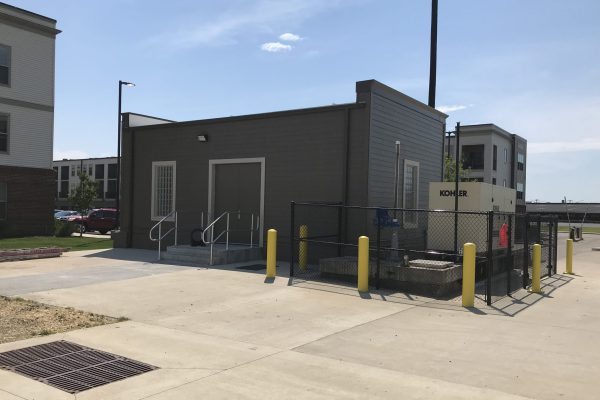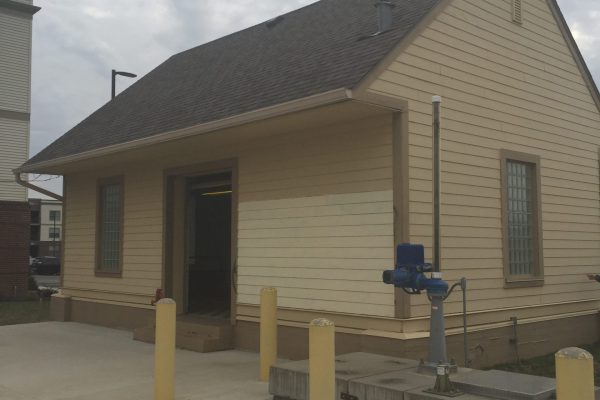Jones & Henry designed upgrades at Lucille and Idylwild pumps stations for the City of Dayton as part of a design-build project with Shook Construction. This design included a hydrologic and hydraulic model of the existing storm water collection system, evaluation of the existing pump station, and sizing of new pumps.
Pumps in the range of 13,000 to 23,500 gpm were either rebuilt or replaced and a new submersible 3,000 gpm pump was installed in the Idylwild pump station for small rain events. Rather than replacing the two existing 23,500 gpm stormwater pumps, they were shipped to the OEM, Peerless Pump to be inspected and have bearings and lineshafts replaced. The pumps were installed in 1960, but each pump has less than 250 hours run time on it due to the low frequency nature of running the pumps only when the Mad River is above a critical stage where downtown Dayton will flood. Renovating the existing pumps saved the City approximately $170,000.
Significant structural and architectural upgrades were required at the Idylwild pump station building. Electrical upgrades included new controls, lighting, and a new backup generator. The pictures display the before and after results. The pump station now blends in architecturally with the surrounding apartments. Structurally there was removal of an existing roof and truss system, and installation of a new structural steel flat roof system with equipment hatches for pump maintenance.
Site improvements for erosion control were required at the Lucille pump station. A 72-inch pipe headwall was rehabilitated, and two bar screens were redesigned and replaced to handle large influent slugs.
Challenges included accurately calculating stormwater runoff for a 600 acre drainage area while taking into account storage of the existing piping system. The existing stormwater pumps were oversized for small rain events, thus the solution of adding a 3rd smaller submersible pump to handle these events was designed into the project. Services included a Hydrology Analysis of the City’s existing stormwater system, and calculations of probability and flows for several different scenarios to determine the best available options for renovating these critical assets.




